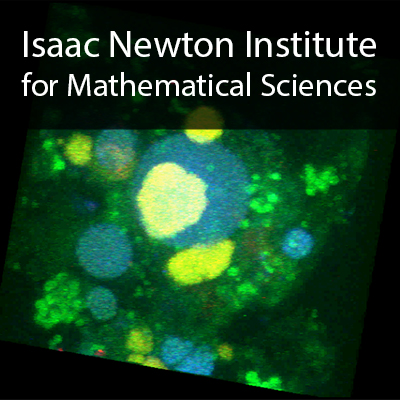Plenary Lecture 3: Simple Theory and the Microbial World
37 mins 2 secs,
167.73 MB,
WebM
640x360,
29.97 fps,
44100 Hz,
618.37 kbits/sec
Share this media item:
Embed this media item:
Embed this media item:
About this item

| Description: |
Curtis, T (Newcastle University)
Wednesday 10 September 2014, 14:40-15:15 |
|---|
| Created: | 2014-09-15 14:13 |
|---|---|
| Collection: | Understanding Microbial Communities; Function, Structure and Dynamics |
| Publisher: | Isaac Newton Institute |
| Copyright: | Curtis, T |
| Language: | eng (English) |
| Distribution: |
World
|
| Explicit content: | No |
| Aspect Ratio: | 16:9 |
| Screencast: | No |
| Bumper: | UCS Default |
| Trailer: | UCS Default |
| Abstract: | Co-authors: Bill Sloan (Glasgow University), Dana Ofiteru (Newcastle University), Lise Ovreas (Bergen University), Joana Baptista (Newcastle University), Chris Quince (Glasgow University)
The microbial world is of astronomical dimensions and of profound practical importance. And yet, though astronomers and engineers rely heavily on quantitative theory, most microbial ecologists and associated practitioners do not. Those that do, are heavily influenced by classical ecological theory. However, most classical ecological theory is not “up to the job”. The inscrutability and practical importance of the microbial world means that prediction should be our aspiration. This imposes certain disciplines up on us. In particular, we should start as simply as possible, find and understand the parameters and what they can explain; and then move on. The simplest possible theory of community assembly in microbial communities is perhaps the work of Bill Sloan and his colleagues. The key parameters are the size of the community, the immigration rate and the size and make up of the metacommunity. The size of the community we often know. Finding the immigration par ameter yields useful insights about how communities form and change and the relative importance of immigration and evolution. The size and the nature of the metacommunity is less well understood, but its exploration hints at generic and useful rules in evolution that could be both intrinsically interesting and very important. However, we should look forward to a future in which mathematics has the stature and utility in microbial ecology, that it enjoys in physics. Then microbial ecology will done at the scale and with the rigour that the field merits. |
|---|---|
Available Formats
| Format | Quality | Bitrate | Size | |||
|---|---|---|---|---|---|---|
| MPEG-4 Video | 640x360 | 1.93 Mbits/sec | 537.14 MB | View | Download | |
| WebM * | 640x360 | 618.37 kbits/sec | 167.73 MB | View | Download | |
| iPod Video | 480x270 | 522.06 kbits/sec | 141.54 MB | View | Download | |
| MP3 | 44100 Hz | 249.8 kbits/sec | 67.79 MB | Listen | Download | |
| Auto | (Allows browser to choose a format it supports) | |||||

